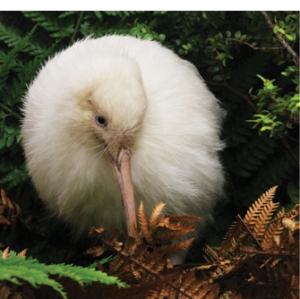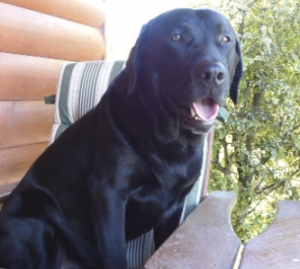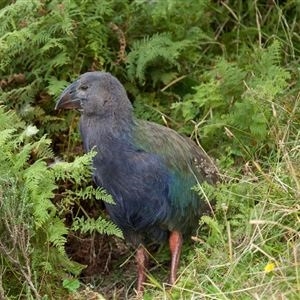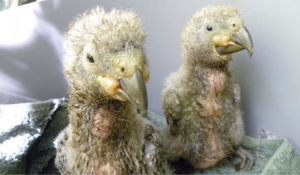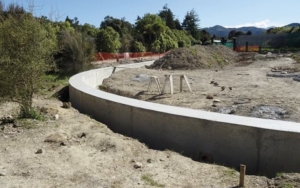Displaying items by tag: Pukaha Mount Bruce
Pukaha farewells leading lady
Pukaha Wildlife Centre's summer was overshadowed by the death of their treasured white kiwi, Manukura, who was farewelled in a special service on January 9.
However, Pukaha’s captive breeding ranger Tara Swan says there have been "lots of positive, happy things happening in the bush since our dear Manukura left us”, including the hatching of her 'niece or nephew', a chick from Manukura's brother, Mapuna.
"The little white patch you can see on the tip of the chick's head is almost like a little throwback to the white feather gene of Manukura (someone called it 'Manukura's kiss')," she said.
"We have had so many yellow crowned akariki hatch, with 16 fledglings and five still in the nest across two pairs, and all our kaka have been successful this year, with five kaka fledged across the aviaries," Tara said.
These birds will be released at Cape Sanctuary in Hawke’s Bay later on in the year.
Lockdown's silver lining
Flight magazine asked Pukaha/Mt Bruce's captive breeding ranger Tara Swan how the wildlife centre coped
during lockdown.
"Lockdown at Pukaha was lovely actually! Obviously businesswise, like everywhere, it was a bit of a big change, but for the wildlife, it was like a break for them. I think nature enjoyed it." she said.
The stand-out moment during lockdown was the arrival of a kōkako pair, walking the tracks daily and visiting the rangers.
"I think the lack of visitors walking around inspired the birds to come and check out what we do every day.
"We had a stunning orange- fronted kākāriki clutch raised and fledged during the lockdown (actually due for release in
September, depending on how this new Covid update plays out)", Tara said.
During the first week of lockdown, four kākā juveniles from the centre's Aviary 3 pair were released into the forest.
This was ideal timing as it meant they could get used to the feed stations and other kākā without the distraction of
people too. They still hang around the feed stations so are easy to spot.
"Once lockdown was over, we sent two kiwi chicks to Sanctuary Mountain for release and four red-crowned kākāriki juveniles were released at Cape Sanctuary.
"Nine yellow-crowned kākāriki went to Nelson, where some stayed for some new captive breeding pairs and the rest were released on Puangiangi Island. "So yes, it was a bit mad! During and after as so many bird transfers were delayed due to the travel restrictions. Thankfully it was during the quiet season," Tara said.
First Whio duckling in 15 years
Staff at Pukaha Mount Bruce were excited in late October last year with the arrival of the first whio (blue duck) to be hatched there in over 15 years.
The only one of four eggs to hatch, the duckling was raised with three other ‘exotic’ ducklings. The duckling’s mother was then put on another clutch of eggs and with hopes for a better hatch rate from the second clutch.
Staff are still unsure of the sex of this first whio. At approximately six months old a male whio will whistle when picked up and a female whio will grunt.
Pukaha Mt Bruce news
Pukaha Mt Bruce news
Paintings at Pukaha
It started in March but continues to June 22 so you can enjoy an exhibition of native bird paintings at Pukaha Mount Bruce.
Entry to the exhibition is free of charge.
Mauriora update
In October 2013 Mauriora, the second white kiwi to be hatched at Pukaha Mount Bruce, was released into the Pukaha reserve. A close eye was kept on him and in February it was decided that his weight wasn’t being maintained. He was taken to Wildbase at Massey University where it was discovered he had ‘grass burrs’ in the roof of his mouth.
They were removed and his appetite quickly recovered.
He’s back in the Pukaha reserve and we’ll continue to keep an eye on him.
Million dollar project for Pukaha Mt Bruce
This grant has kick started fundraising for the $1.1 million project designed to provide visitors to Pukaha with an exciting experience – allowing them to get closer to native bird life and flora and fauna.
Construction of the project is due to commence in May 2015 with completion expected in November 2015.
This is a substantial grant from Trust House Foundation who have long been a key supporter of Pukaha Mount Bruce.
This walk through aviary will give visitors an amazing experience, providing a greater understanding of New Zealand’s precious flora and fauna and how we, as individuals and collectively can play our part in its protection.
The proposed aviary has been designed by the Pukaha Mount Bruce Board in collaboration with Fabric Structures Ltd, who built The Cloud in Auckland Viaduct; Boffa Miskall Landscape Architects and Rigg Zschokke Ltd.
Spring arrival at Pukaha
Staff are also keeping a close eye on five male kiwi who are sitting on eggs in the forest and hoped to bring in the first kiwi chick of the season. While they had intended to bring it in as an egg and hatch it in their nursery, the burrow was too deep for the egg to be safely taken out without damaging the burrow.
Keep right up-to-date with all new hatchings and events on the facebook page - www.facebook.com/.
Pukaha releases shore plovers
Kiwi deaths at Pukaha
Takahe – a very special bird
The mother takahe was believed to be past breeding age, but she was sitting on an egg.
Takahe are endangered native birds with a population of only 327, including 100 breeding pairs.Todd Jenkinson said there are now 347 takahe around the country. They are endangered native birds and include 100 breeding pairs.
The Takahe were originally confined to Fiordland west of Lake Te Anau. They have a head and neck of iridescent indigo blue with back and tail olive green, with white under the tail, scarlet and pink beak, red legs and feet. You will know one if you ever see one.
Even though the Pukaha staff had assumed the 13-year-old Fomi would not have any more offspring, they were hoping the egg would produce a chick. The team were keeping a close eye on development and hoping the egg would produce a chick.
If the chick had hatched at the centre it would be the first Takahe chick hatched there in two decades.
Lots of babies at Pukaha Mt Bruce
The Wairarapa breeding programme is going very well at Pukaha Mt Bruce. The Shore Plover programme has hatched 22 healthy chicks so far this year with five pairs now sitting on their third clutch.
The two pair of pateke are nesting again having so far successfully reared 12 ducklings between them.
The whio pair has three ducklings and there are three juvenile kiwi in the creche nearly ready for release as well as a kiwi chick hatched on Christmas Eve and one kiwi egg externally pipped and will hatch any day.
One red-crowned kakariki pair have three chicks to look after while another pair are waiting for their five eggs to hatch.
Wild kaka have this year utilised three of the nesting boxes with one pair already fledged and another three chicks not far behind.
Pukaha Mt Bruce ups the anti on Predators
New self re-setting traps for Pukaha
Pukaha has been looking at a wider range of options for predator control in the reserve and the surrounding buffer zone. Then thanks to a generous donation from Pub Charity, they were able to purchase a number of A24 self resetting stoat and rat traps.
You can check them out at www.goodnature.co.nz
The initial consignment of traps are for their buffer zone provided by the Greater Wellington Regional Council and are also near the aviaries at the Visitor Centre. This February they will be rolling out these devices into their ‘front face’ to supplement the current DoC 250 traps.
The total number of rats caught in the 12 month period September 2014 - September 2015 in both the reserve and buffer zone was 1530. The number of mustelids (weasels, stoats and ferrets) was 104.
Pukaha are continuing to look at innovative predator control techniques and will keep supporters updated on progress.
Picture:
Concrete, concrete and more concrete was the order of the day when the footing was laid for the new free flight aviary. The construction was underway thanks to the teams at Rigg-Zschokke Ltd and Higgins Contractors, The team at Puckaha Mt Bruce were hoping that all going to plan they are aiming for an opening date in late February 2016.

